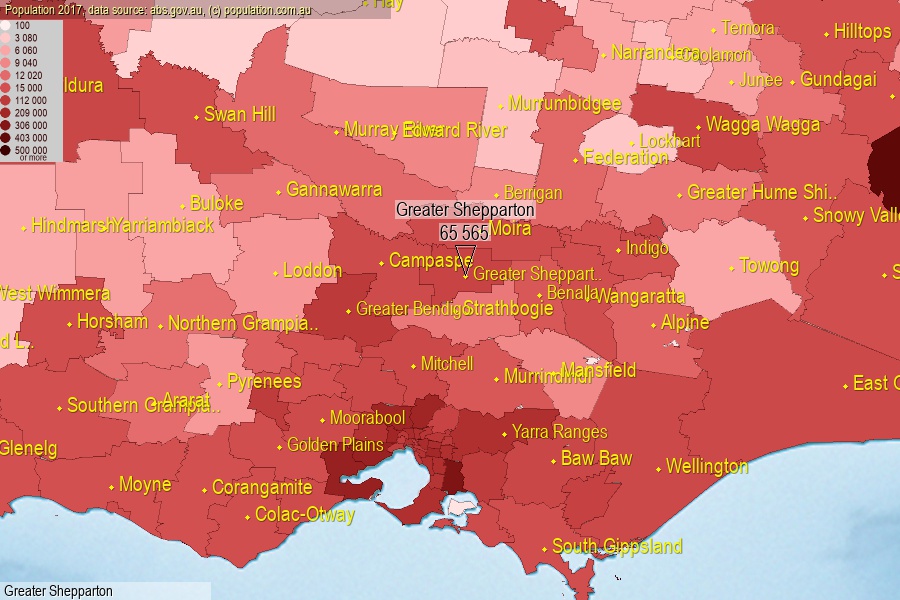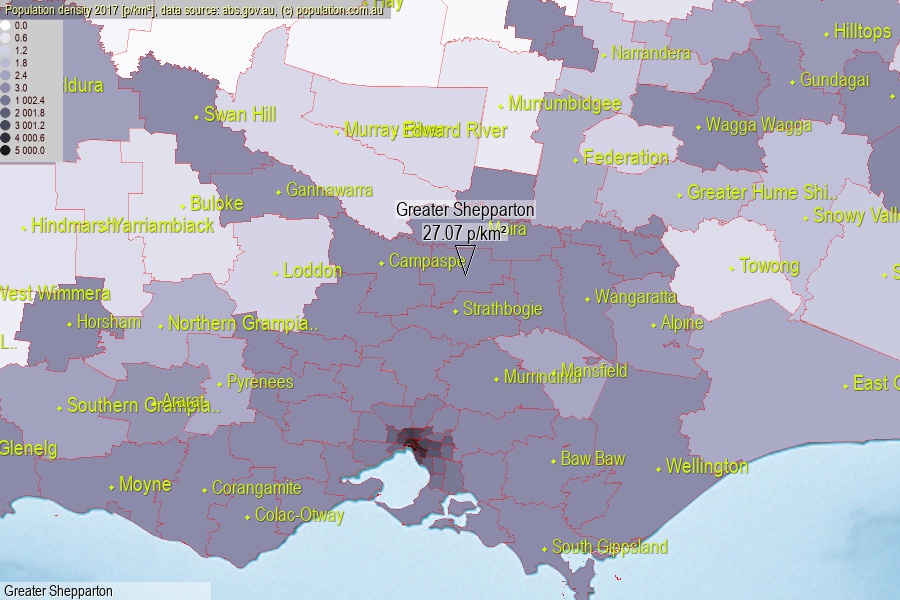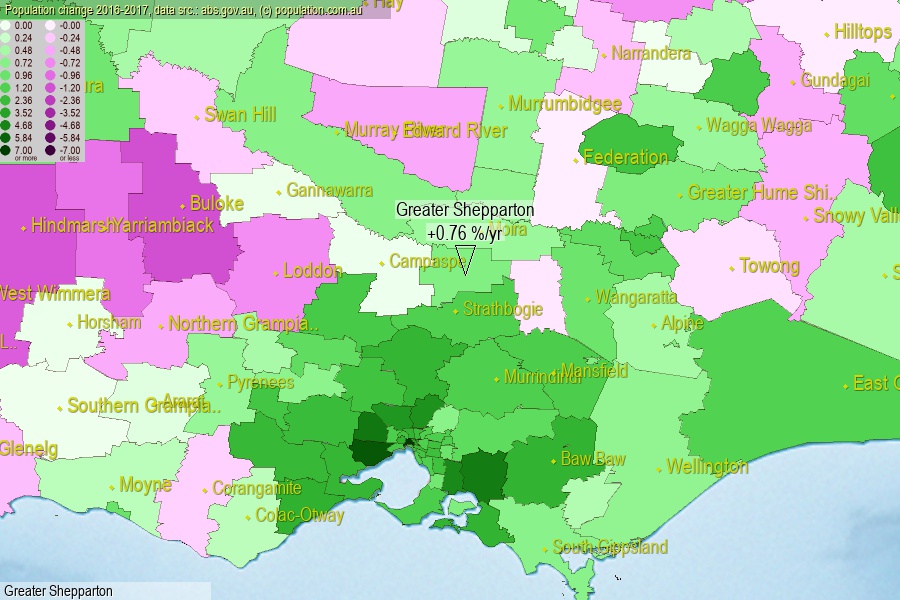 population.com.au
population.com.auLast official estimated population of Greater Shepparton City (as Local Government Area) was 65 565 people (on 2017-06-30)[2]. This was 0.26% of total Australian population and 1.02% of VIC population. Area of Greater Shepparton is 2 421.90 km², in this year population density was 27.07 p/km² . If population growth rate would be same as in period 2016-2017 (+0.76%/yr), Greater Shepparton population in 2025 would be 69 646. [0]



Click to enlarge. Greater Shepparton is located in the center of the images.
Population [people], population density [p./km²] and population change [%/year] [2]
[1996-2001] +1.24 %/Y
[2001-2002] +0.67 %/Y
[2002-2003] +0.66 %/Y
[2003-2004] -0.07 %/Y
[2004-2005] +0.14 %/Y
[2005-2006] +0.46 %/Y
[2006-2007] +0.89 %/Y
[2007-2008] +1.09 %/Y
[2008-2009] +1.51 %/Y
[2009-2010] +1.13 %/Y
[2010-2011] +0.49 %/Y
[2011-2012] +1.32 %/Y
[2012-2013] +1.09 %/Y
[2013-2014] +1.07 %/Y
[2014-2015] +0.89 %/Y
[2015-2016] +0.90 %/Y
[2016-2017] +0.76 %/Y
[0] Calculated with linear interpolation from officially estimated population
[1] Read more about LGA and Australian Statistical Geography Standard (ASGS) on abs.gov.au
[2] Population data from Australian Bureau of Statistics (Population and density: 2017; change: 2016-2017)
[3] Digital Boundaries: Australian Statistical Geography Standard (ASGS) 2016.